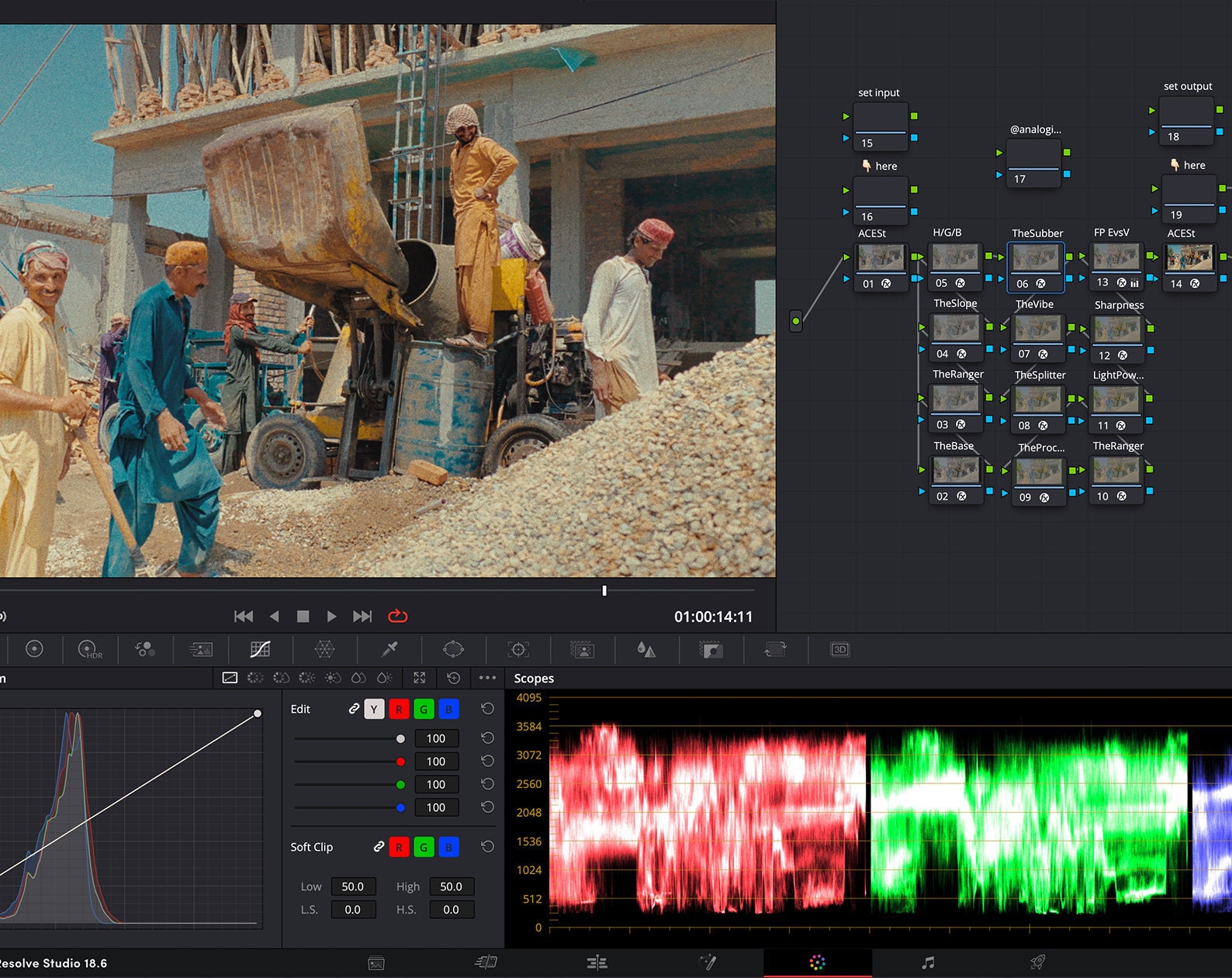In the digital age, filmmakers face the challenge of recapturing the emotional authenticity of analog cinema without sacrificing the precision and efficiency of modern technology. Tools like Look-Up Tables (LUTs) and film emulation are becoming pillars in film production, helping directors bridge the digital-analog divide. But how did these tools come to be, and why are they so essential to today's filmmakers?LUTs essentially function as “color translators” that transform raw digital footage to adhere to a predefined color palette. This process can dramatically shift a scene’s atmosphere, instantly transporting viewers to vibrant, warm settings or cool, melancholic spaces with just a few clicks. Initially born in the post-production labs of major film studios, LUTs have evolved to become accessible on consumer devices like smartphones. This technological shift enables every filmmaker, professional or amateur, to explore a world of visual nuances directly from their device.With the integration of LUTs in camera monitoring software and smartphone applications, creators can see real-time colorization effects during shooting, removing much of the color correction workload in post-production and ensuring immediate visual consistency. Digital platforms like Adobe Premiere and DaVinci Resolve allow filmmakers to customize LUTs, opening up endless possibilities for creative interpretation.Film emulation, on the other hand, is the second major player in this analog-digital transition. Unlike LUTs, which focus mainly on colors, film emulation replicates the physical characteristics of analog film, such as grain, texture, and tonal variations. This process requires a deep understanding of the behavior of classic film stocks, like the renowned Kodak Vision3 or Fuji Eterna. Through these tools, filmmakers can infuse a sense of warmth and authenticity into their digital productions, making images more intimate and less “perfect,” thus enhancing viewer engagement.Notably, this technique shines in independent productions that use emulation to add a nostalgic element to modern stories. The ability to access film emulation on everyday devices is transforming how content is created. A film or documentary shot with a smartphone can now achieve the same visual quality as a film stock production, thanks to these technologies.The fusion of LUTs and film emulation represents the future of digital cinema. A new visual language is emerging that combines digital precision with the beauty of the past, opening up a new era of cinematic storytelling. As filming technologies continue to improve, it’s likely that we’ll see an exponential rise in the quality of content produced on increasingly smaller devices. LUTs and film emulation are tools that allow directors to play with the audience’s emotions and imagination, keeping classic cinematic traditions alive in the era of 4K and ultra-digital footage.
The use of Look-Up Tables (LUTs) and film emulation has reached a level of sophistication that makes these tools nearly invisible to the viewer’s eye, yet filmmakers leverage them to evoke ever-more refined emotions and atmospheres. For example, in Mad Max: Fury Road, LUTs were essential for achieving the iconic contrast between the turquoise skies and the desert’s fiery orange sands—a combination that injects a palpable sense of tension and danger into every frame. Here, LUTs not only enhance visual intensity but also contribute to creating an immersive, hyper-real world. The final result is one of the most visually powerful experiences in modern cinema, made possible by LUTs specifically calibrated for each scene.Similarly, films like Wes Anderson’s The Grand Budapest Hotel have employed film emulation to evoke a vintage aesthetic with delicate pastel colors, visible grain, and a harmony of hues that feels from another era. This effect, achieved through emulation, crafts a surreal yet familiar world that captures the eye with a sense of nostalgia and visual warmth. Anderson’s LUTs are tailored to each scene, ensuring that the aesthetic is not only visually cohesive but also amplifies the themes and emotions of the story itself.Practical applications of these tools extend to independent productions and documentaries, where film emulation often transforms raw smartphone footage into cinema-grade shots, allowing emerging filmmakers to tell their stories without a high budget. These tools are democratizing film production: thanks to the ability to apply cinematic emulation and LUTs to amateur footage, scenes shot with basic devices can evoke the same emotional intensity as those created with professional equipment.As these technologies evolve, we find ourselves on the brink of a new era where the boundaries between digital and analog increasingly blur, bringing cinema into an unexpected dimension. Imagine a future where a filmmaker can shoot an entire movie on a smartphone and, in real-time, watch their vision come alive with the aesthetics of classic film stock. We’re only beginning to glimpse the potential of these tools, and one can’t help but wonder: how far will the technological evolution of cinema go?Whether it’s a multimillion-dollar blockbuster or a short film shot in a single room, the ability to evoke visual emotions that connect past and present is in everyone’s hands. What spectacular images await us, which scenes will captivate us, and which emotions will the next film manage to evoke? The beauty of this journey is that the ending is never written; the next innovation could forever change how we see and feel cinema.

